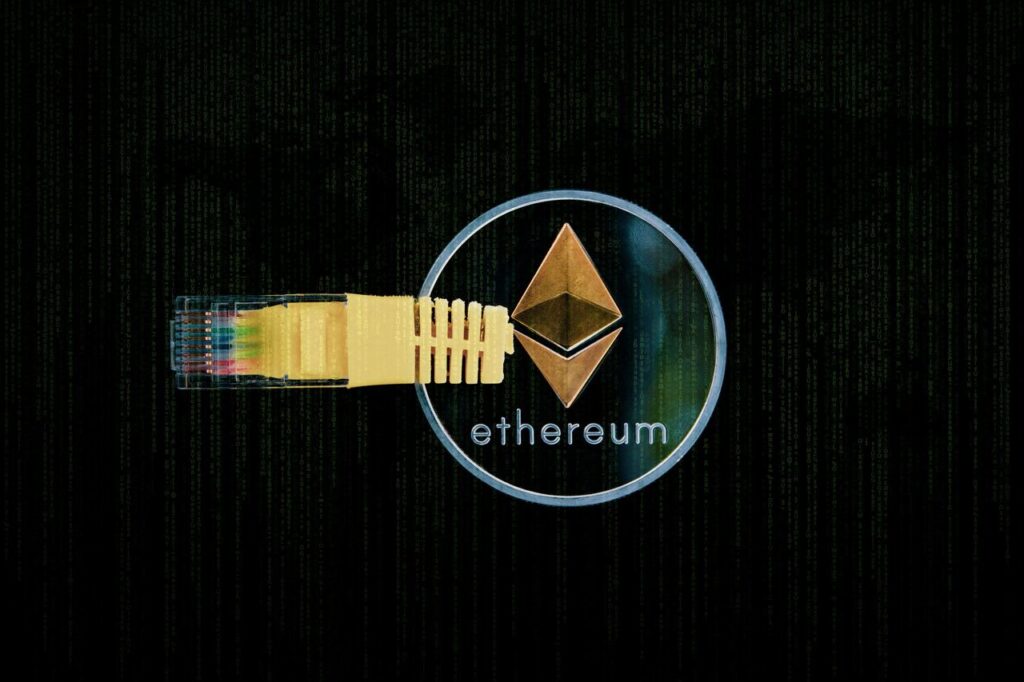A lot of things have failed in DeFi this year, but this one didn’t — On the 15th of September, 2022 at 06:42:42 UTC at block 15537393, the Ethereum Mainnet merged with the BeaconChain at the Terminal Total Difficulty of 58750000000000000000000.
After years and years of disappointing delays, Ethereum finally completed the much-anticipated transition from a Proof-of-Work consensus to Proof-of-Stake.
TL:DR
- Ethereum Mainnet uses proof-of-stake, but this wasn’t always the long-term plan.
- The Ethereum team had postponed the Proof-of-Stake transition multiple times over the last few years.
- The transition from the Proof-of-Work mechanism to Proof-of-Stake was officially termed as “The Merge”.
- On Sept 15th 2022, the original Ethereum Mainnet was successfully “Merged” with a separate Proof-of-Stake blockchain called the Beacon Chain.
- The Merge is said to have reduced Ethereum’s energy consumption by approximately 99.95%.
Ethereum Founder, Vitalik Buterin celebrated the historic moment with a tweet.
The Merge will now see Ethereum transition from the Proof-of-Work driven Mainnet, to the new Beacon chain which deploys a Proof-of-Stake consensus mechanism. This transition will see the Ethereum network consume 99% less energy that the previous PoW system.
Whether you are pro-PoW (Proof of Work) or anti-PoS (Proof of Stake) we can put the debate on hold and take a moment to applaud Vitalik Buterin and all the developers that worked hard behind the scenes.
Over the last few years, Ethereum, Bitcoin and other prominent blockchain networks have come in for criticism for the massive energy demands that it takes to power them. Experts have raised sustainability concerns over their contribution to C02 emission over the world. From China, to the United States, India and Malaysia, many countries have made laws targeting cryptocurrency miners. That’s why The Merge has garnered positive attention both within and beyond the crypto world.
What will happen to the previous Ethereum Network (PoW)?
In the months leading to the Merge, many Ethereum Proof of Work miners raised concerns about how they would deploy their expensive mining equipment. Now that the ETH Merge has been completed and these miners are no longer able to use their hardware to validate transactions on the ETH network, a number of large Ethereum mining pools are expected to begin supporting the EthereumPoW (ETHW) network.
According to a series of tweets from an account representing the EthereumPoW fork, major mining pools including F2Pool, Poolin, and BTC.com will now support mining of the ETHw, which has now commenced after The merge.
However, some miners are also reportedly selling off their PoW mining Equipment (i.e Graphic Cards) and raising capital to acquire Stake and become validators in the new ETH PoS system.
This is not the first time that Ethereum has experienced a split. Back in 2016 – the Ethereum Classic (ETC) split from the initial Ethereum Network. Ethereum Classic was created after the infamous $55m DAO hack that almost brought down the Ethereum network in 2016.
Due to the massive scale of the hack, some members of the community proposed reversing the state Ethereum blockchain to rescue the affected investors. Others argued that doing that would set a disruptive precedent for future bailouts. The dispute caused a division among the Ethereum developer community. After a hastily-organized poll, 97% of the Ethereum community voted to restore the network, and reclaim lost funds through a hard fork.
Consequently the Ethereum blockchain split into two separate networks. The newer network inherited the name Ethereum and uses Ether, and the “ETH” ticker. The older and smaller network, with the reversed state, became known as Ethereum Classic, uses “ETC” as its cryptocurrency ticker.
How Does The Merge Affect dApps & Ethereum Holders?
For some time, there have been swirling rumors that the Merge would make Ethereum faster and cheaper. But this isn’t exactly true—at least not yet.
The Merge simply signifies Ethereum’s move to a new consensus mechanism. Which will mean a 99% more energy-efficient blockchain. But this doesn’t mean Ethereum transactions will be noticeably quicker or that transaction fees will become cheaper.
Why? This is because the transition to Proof of Stake will only mean that Blocks are produced and validated at roughly 10% more frequency than they are on the previous Proof of Work system.
“Though some slight changes exist, transaction speed will mostly remain the same on layer 1. This is a fairly insignificant change and is unlikely to be noticed by users.”
— Ethereum Foundation.
This means that Ethereum Layer2 solutions such as Polygon(Matic) will retain their utility in spite of the completion of the merge. Previously, many analysts had feared that layer2 solutions may become redundant if the Merge has slashed Ethereum’s gas fees by a large margin.
Glossary —
Here are some key terminologies surrounding the Ethereum Merge that you should become familiar with.
- Mainnet: is the primary public Ethereum production blockchain, where actual-value transactions occur on the distributed ledger.
- The Beacon Chain: the new Ethereum proof-of-stake blockchain network. Launched in 2020, but has now become fully operational after the merge was completed.
- PoW: Proof of work (PoW) is a form of blockchain network consensus that requires generating a hash (a long string of characters) that matches the target hash for a Block of transactions to be validated. It often requires the use of powerful computers & specialized mining equipment.
- PoS: Proof-of-Stake (PoS) is an alternative cryptocurrency consensus mechanism that relies on randomly selected validators to secure the network and verify blocks of transactions. The validators are typically required to stake certain amounts of a specified asset.
- ETH: The native cryptocurrency of the Ethereum Network which began running on the PoS mechanism as of Sept 15th 2022.
- ETHW: EthereumPoW is a Proof-of-Work network fork of the Ethereum blockchain. It will continue to run independent of ETH. Several exchanges have already listed ETHW tokens, signaling their intention to support the forked chain.
- ETHClassic: Ethereum Classic (ETC) is a hard fork of Ethereum (ETH) that launched in July 2016 as a fallout of the infamous DAO hack. It continues to runs the PoW consensus mechanism.
InsurAce and the Ethereum Merge.
Like thousands of other prominent Decentralized applications, The Insurace dApp is also built and hosted on major EVM protocols. EVM refers to the Ethereum Virtual Machine — an open source, globally decentralized computing infrastructure that executes programs called smart contracts.
So, we were paying close attention to the Merge. To protect our users from any operational disruptions, we paused our services for an intended 48hrs. We restored our services within 12hrs following the successful completion of the merge.
You can also read our in-depth review of the prominent EVM networks here.
What do you think about The Merge? Join The Community, and Share Your Opinion.
Discord — https://discord.com/invite/vCZMjuH69F
Twitter — https://twitter.com/InsurAce_io
Telegram — https://t.me/insurace_protocol

